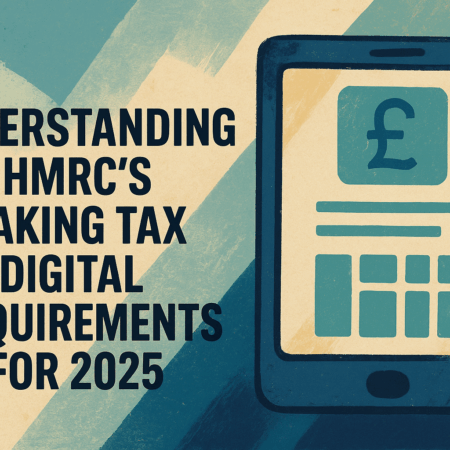Let’s be honest—when your energy bill drops through the letterbox, the last thing you’re probably thinking about is where that electricity actually comes from. But here’s a question that’s been on more UK households’ minds lately: are green energy tariffs worth the extra cost for UK households in 2025?
With energy prices fluctuating and climate concerns growing, more people are weighing up whether switching to renewable energy is a smart financial move or just a feel-good option. The good news? Green energy tariffs aren’t quite the premium luxury they once were, and the landscape has changed dramatically as we head into the final months of 2025.
In this article, we’ll break down everything you need to know about green energy tariffs in the UK—what they actually are, how much they cost, and most importantly, whether they make sense for your household. Whether you’re driven by environmental values, curious about potential savings, or simply exploring your options, let’s dive into the real story behind sustainable energy for UK homes.
What Are Green Energy Tariffs?
You might be wondering what makes an energy tariff “green” in the first place. Simply put, green energy tariffs UK households can choose from are electricity (and sometimes gas) plans that source power from renewable sources like wind, solar, or hydroelectric power, rather than fossil fuels like coal or natural gas.
But here’s where it gets a bit more nuanced. Not all green tariffs are created equal, and it’s worth understanding the different types available:
- 100% Renewable Tariffs: These guarantee that all your electricity comes from renewable sources. Major providers like Octopus Energy and OVO Energy offer 100% renewable electricity across all their tariffs as standard in 2025.
- REGO-Backed Tariffs: Most green tariffs use Renewable Energy Guarantees of Origin (REGO) certificates to prove they’re matching your energy usage with renewable generation. While you’re still drawing from the national grid, your supplier guarantees they’ve put renewable energy into the grid equivalent to what you’ve used.
- Carbon Offset Tariffs: Some providers offer to offset the carbon emissions from your gas usage, though these have become less common in 2025 as suppliers focus on genuine renewable generation.
As of October 2025, the UK energy market has matured significantly in its green offerings. The government’s clean power targets for 2030 have driven investment in renewable infrastructure, and providers like Ecotricity, Good Energy, and 100Green continue to push boundaries with tariffs that directly invest in new renewable projects—not just paper certificates.
What’s particularly interesting in 2025 is that renewable energy tariffs UK households sign up for are no longer niche products. They’ve become mainstream, with most major suppliers offering green options as their standard electricity supply.
The Cost of Green Energy Tariffs in 2025
Right, let’s talk numbers. This is probably what you’re really here for—how much more (or less!) will green energy actually cost you?
Here’s the good news: the gap between green and standard tariffs has narrowed considerably. As of October 2025, Ofgem’s energy price cap sits at £1,755 per year for a typical household paying by Direct Debit. This represents a 2% increase from the summer quarter but remains significantly lower than the energy crisis peaks of 2023.
Are Green Tariffs More Expensive?
Here’s the surprising bit—not necessarily. Many green energy suppliers are competing aggressively on price in 2025. For example, Octopus Energy’s 12-Month Fixed Tariff, which includes 100% renewable electricity as standard, is running about 6% below the October price cap. That’s right—green and cheaper.
Ecotricity has even absorbed wholesale price increases on their Green Variable tariffs, keeping prices stable for customers despite Ofgem’s price cap rising to £1,849 in April 2025 before settling back to current levels.
What’s Driving These Costs?
Several factors influence green energy costs in 2025:
- Wholesale energy prices: Renewable energy generation costs have decreased as technology improves and more capacity comes online
- REGO certificate costs: While suppliers like Octopus spend around £250 million annually on REGO certificates, this cost is increasingly offset by cheaper renewable generation
- Government policy: The UK’s ambitious 2030 clean power targets and net-zero commitments are driving renewable infrastructure investment, which helps stabilize prices
- Market competition: With more suppliers offering green tariffs as standard, competition is keeping prices competitive
Major Provider Comparison
When comparing sustainable energy for households across major UK providers in October 2025:
- Octopus Energy: All tariffs include 100% renewable electricity with various options from fixed to flexible smart tariffs. Their Agile and Tracker tariffs are particularly good for smart meter users who can shift usage to cheaper times
- OVO Energy: Supplies 100% renewable electricity across all plans and is working toward becoming a zero-carbon company by 2035
- 100Green: Offers flexible, sustainable plans specifically designed for households wanting maximum environmental impact
- Ecotricity and Good Energy: Have permanent exemptions from the price cap due to their contributions to renewable energy growth, meaning their prices can vary but often include better support for new green infrastructure
The bottom line? You don’t necessarily have to pay more for renewable energy costs in 2025. Sometimes, you might even pay less while doing your bit for the planet.
Benefits of Green Energy Tariffs
Beyond the price tag, what are you actually getting when you switch to a green energy tariff? Let’s break down the real benefits.
Environmental Impact That Actually Matters
The most obvious benefit is environmental. When you choose a green tariff, you’re supporting the renewable energy sector and helping reduce the UK’s carbon footprint. Every household that switches sends a market signal that drives further investment in wind farms, solar arrays, and hydroelectric facilities.
To put it in perspective, a typical UK household switching to 100% renewable electricity can reduce their carbon emissions by approximately 1.5 tonnes per year. That’s equivalent to taking a small car off the road for six months.
Supporting UK Energy Security
Here’s something people don’t always consider: renewable energy is domestic energy. Unlike fossil fuels that often need to be imported, wind turbines spinning off the Scottish coast and solar panels on English rooftops are generating British energy for British homes. In 2025, with the government’s push for energy independence, this matters more than ever.
Financial Benefits and Incentives
While green tariffs themselves are competitively priced, there are additional financial perks:
- Smart tariff integration: Many green suppliers offer innovative smart tariffs that let you use cheap, green electricity when renewable generation is high (like windy nights). Octopus Energy’s Agile tariff, for example, can significantly reduce bills for flexible users
- Government support schemes: The UK’s clean power action plan for 2030 includes various support mechanisms for renewable energy adoption, and some suppliers pass these savings directly to customers
- Long-term price stability: As renewable generation becomes cheaper and more prevalent, green tariffs are likely to become increasingly competitive compared to fossil fuel-dependent alternatives
Future-Proofing Your Energy Supply
Let’s think ahead a bit. The UK government has set ambitious targets for clean power by 2030 and net-zero by 2050. This means renewable energy infrastructure is getting massive investment—we’re talking unprecedented amounts of offshore wind being built and reformed grid connection systems. By choosing green energy now, you’re aligning yourself with where the entire energy market is heading anyway.
Contributing to Community Energy Projects
Some green suppliers, particularly those exempt from the price cap like Good Energy and Ecotricity, directly invest customer payments into new renewable energy projects. This means your energy bills are actively funding the construction of new wind farms and solar installations, creating a tangible impact beyond just purchasing green electricity.
Drawbacks and Challenges
Look, I’d love to tell you green energy tariffs are perfect for everyone, but that wouldn’t be the whole story. Let’s be honest about the potential downsides.
Price Volatility Concerns
While many green tariffs are now competitively priced, the October 2025 price cap increase to £1,755 shows that energy prices can still fluctuate. Some green suppliers with price cap exemptions may charge more than the capped rate, arguing that their higher costs reflect genuine investment in renewable infrastructure rather than just buying REGO certificates.
The Greenwashing Problem
Here’s an uncomfortable truth: not all “green” tariffs are equally green. Most suppliers rely heavily on REGO certificates, which essentially mean they’re buying proof that renewable energy was generated somewhere, while you might still be physically receiving the same mixed electricity from the national grid as everyone else.
Think of it like this: if 80% of your “green” electricity relies on REGOs (as is common with major suppliers), you’re supporting the renewable sector financially, but the actual electrons powering your kettle might have come from various sources. That’s not inherently bad, but it’s worth understanding.
Limited Options in Some Regions
While major cities have plenty of green supplier options, some rural areas might face limited choice. Additionally, if you’re in rental accommodation or certain types of shared housing, you might not have the freedom to switch suppliers at all.
Fixed Tariff Trade-offs
Some of the best-priced green tariffs in 2025 come with exit fees (OVO Energy charges £75 per fuel on fixed tariffs, for example). If you need flexibility to switch, this could be a drawback, though Octopus Energy notably doesn’t charge exit fees on most tariffs.
Complex Smart Tariff Requirements
The greenest, cheapest tariffs often require smart meters and some effort to shift your energy usage to off-peak times. If you’re not particularly tech-savvy or have inflexible energy needs (like needing heating at specific times), you might not benefit from these innovative offerings.
The reality is that green energy tariffs, while improved massively in 2025, still might not suit every household’s budget or circumstances. And that’s okay—the key is making an informed choice based on your specific situation.
Are Green Energy Tariffs Worth It?
So we’ve reached the million-pound question (or should that be £1,755 question?). After weighing up all the factors, what’s the verdict for UK households in October 2025?
When Green Tariffs Make Perfect Sense
Green energy tariffs are definitely worth it if you:
- Value environmental impact: If reducing your carbon footprint matters to you, the environmental benefits alone justify the switch—especially now that costs are competitive
- Have a smart meter and flexible usage: Households that can shift energy use to off-peak times can actually save money on innovative green smart tariffs while maximizing renewable energy use
- Want price stability: Some fixed green tariffs offer protection against price cap fluctuations, giving you budgeting certainty
- Support ethical businesses: Many green suppliers are B-Corp certified or have strong ethical commitments beyond just energy supply
When to Think Twice
You might want to consider alternatives if:
- Your household is on a very tight budget and every pound matters—though remember, green isn’t always more expensive in 2025
- You’re in temporary accommodation or planning to move soon and don’t want to deal with supplier switching
- You prioritize having the absolute cheapest available tariff over environmental considerations
Practical Steps for Making Your Decision
Here’s how to work out if green energy tariffs are right for your household:
- Check your current bill: How much are you paying per year? Compare this against the October 2025 price cap of £1,755
- Use comparison sites: Platforms like Uswitch, MoneySuperMarket, or Confused.com can show you green tariff options in your area
- Look for REGO certification: This guarantees the green credentials of the tariff
- Consider your usage patterns: If you have a smart meter, calculate whether a variable green tariff might save you money
- Read the fine print: Check for exit fees, contract lengths, and what “green” actually means for each supplier
The 2025 Reality Check
Here’s the honest truth: in October 2025, the question isn’t really “should I pay extra for green energy?” because often you won’t be paying extra at all. Major suppliers like Octopus Energy and OVO Energy provide 100% renewable electricity as standard across all tariffs, meaning you get green energy without making a special choice.
The real question is whether you want to go further—choosing suppliers who invest directly in new renewable infrastructure, adopting smart tariffs that maximize your renewable energy usage, or opting for suppliers with the strongest environmental commitments.
Take Action Today
Ready to explore your options? Start by checking your current tariff and annual usage on your latest energy bill. Then run a comparison on Uswitch or MoneySuperMarket filtering for green tariffs. You might be surprised to find you can go green without spending more—and in some cases, even save money.
Final Thoughts: Making the Switch in 2025
So, are green energy tariffs worth the extra cost for UK households? The answer in 2025 is increasingly “there often isn’t an extra cost”—and when there is, it’s usually minimal compared to the environmental benefits you’re gaining.
We’ve covered a lot of ground here. Green energy tariffs have evolved from premium, niche products to mainstream offerings that are competitively priced against standard tariffs. With the October 2025 price cap at £1,755, many green options sit at or below this level, especially from providers like Octopus Energy offering tariffs 6% below the cap.
The environmental benefits are clear: reducing your carbon footprint, supporting renewable infrastructure, and contributing to UK energy security. The financial picture is more nuanced but increasingly positive, with competitive pricing, smart tariff innovation, and potential long-term savings as renewable energy becomes the norm rather than the exception.
Yes, there are challenges—price volatility, greenwashing concerns, and the complexity of choosing between different types of green tariffs. But for most UK households in 2025, the benefits of switching to renewable energy costs that are now competitive make it a decision that’s both environmentally and economically sound.
The UK’s journey to net-zero by 2050 and clean power by 2030 means renewable energy isn’t just the future—it’s increasingly the present. Whether you’re motivated by environmental values, curious about innovative smart tariffs, or simply want to ensure you’re getting the best deal, exploring green energy tariffs is worth your time.
What’s your experience with green energy tariffs? Have you made the switch, or are you still weighing your options? Share your thoughts in the comments below—we’d love to hear from you!
And if you found this guide helpful, why not subscribe to our newsletter for more practical tips on saving money while living sustainably? We’ll keep you updated on the latest UK energy tariffs 2025 developments and more eco-friendly household advice.









